Red maple leaf poisoning of horses
Learn how to identify red maple trees and red maple leaf poisoning in horses.
ISSN 1198-712X, Published November 2006
Introduction
The native red maple (Acer rubrum), also called swamp or soft maple, is a potent killer of horses and ponies. Red maple is a tree native to the eastern half of North America.
Toxicity
The toxic ingredient in red maple leaves is believed to be gallic acid
Clinical syndrome
Horses often die within 18–24 hours of ingestion of wilted leaves. Horses that remain alive for 18–24 hours after ingestion of wilted leaves will be severely depressed and cyanotic and produce dark red or brown urine. The mucous membranes are blue to brown from poor oxygenation. They suffer intravascular and extravascular hemolysis (red blood cell breakdown). The percentage of red blood cells circulating in the blood (packed cell volume (PCV)) can drop as low as 8%–10% and the hemoglobin (Hb) concentration can be as low as 50 g/L. The normal PCV and Hb concentrations in horse blood are 28%–44% and 112–169 g/L respectively
Identifying red maples
The leaves of red maples are palmate (like the palm of your hand), 5–15 cm long and about as wide, with 3 to 5 lobes. The two sides of the centre lobe are almost parallel to the midvein
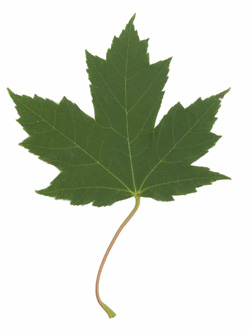
Maple trees commonly found in Ontario
Sugar maple
The sugar maple (Acer saccharum) has smooth leaf margins.

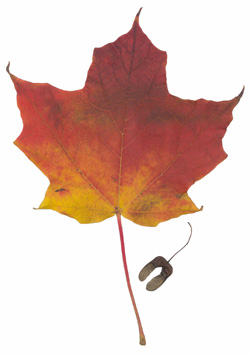
Silver maple
The silver maple (Acer saccharinum) has heavily indented leaf lobes with serrated margins.
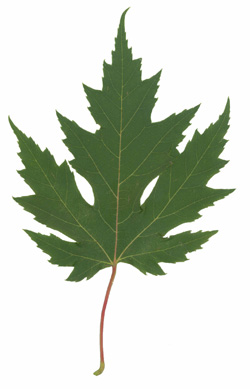
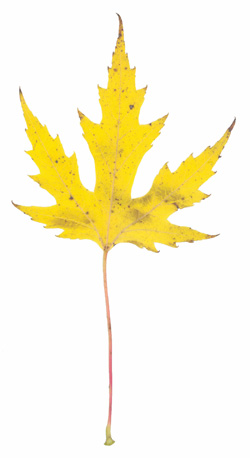
Red maple
The Red maple (Acer rubrum) has serrated leaf margins and the margins of the centre lobe are almost parallel to the midvein. The underside of the leaf is silver grey and the keys are red.
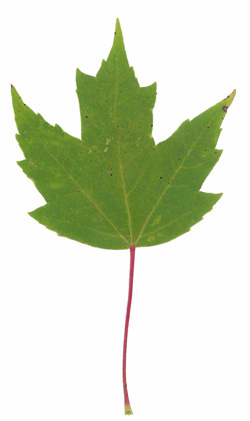
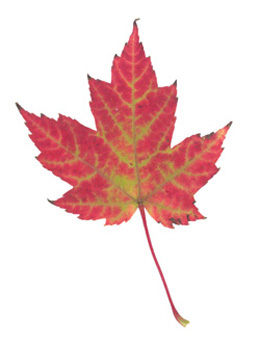
Other maples and trees with similar leaves
Other maples and other trees have leaves similar to red maple.
Norway maple
The Norway maple (Acer platanoides) has smooth leaf margins.

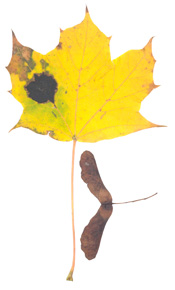
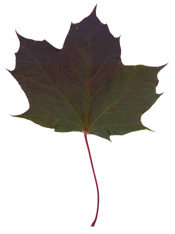
Mountain maple
The Mountain maple (Acer spicatum) has 3-5 lobes with serrated margins.
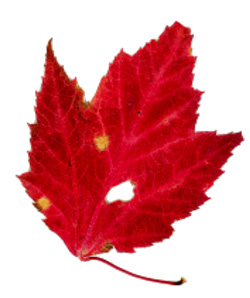
Manitoba maple
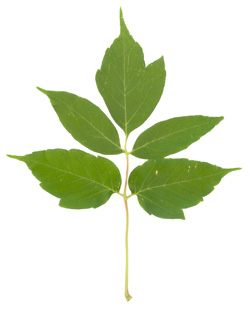
London plane-tree

If in doubt, ensure that overhanging branches or leaves cannot fall into horse pastures OR remove the tree and plant a tree that is known to be safe for horses.
Not all trees that are red are red maple
The landscape industry sells a number of Norway maple tree types that have red and purple coloured leaves but are not the native "red maple" tree. It is not known if these specific "red" coloured maples will poison horses.
General comments
Native red maples should not be planted around pastures where horses or ponies may be kept. If red maple trees are already present, pasture owners might:
- Consider cutting them down and ensuring the stumps are completely dead to prevent sprouting of new shoots and leaves.
- Ensure leaves and branches are not placed on the manure pile where horses can reach them.
- Ensure that the fallen leaves and branches of uncut trees are not allowed to enter into horse paddocks by fencing the trees off to a distance that extends beyond the widest branches of red maples. Be aware that wind may blow detached leaves from nearby trees into paddocks.
Researchers have identified the presence of gallic acid in silver and sugar maple as well as red maple. However, no reports citing either of them as a cause in poisoning have been published.
As a general rule, horse owners should be on a constant vigil to ensure that horses do not browse on the leaves and branches of all trees.
J.L. Farrar's Trees in Canada
Footnotes
- footnote[1] Back to paragraph Horse-killing toxins identified in maple leaves. Cornell University Poisonous Plants Informational Database.
- footnote[2] Back to paragraph Burrows GE, Tyril RJ. Toxic plants of North America. Ames, Iowa: Iowa State Press, 2001:8-11.
- footnote[3] Back to paragraph User guide and fee schedule. Guelph, Ontario: Animal Health Laboratory, University of Guelph, 2004; May:29.
- footnote[4] Back to paragraph Alward A, Corriher CA, Barton MH, Sellon DC, Blikslager AT, Jones SL. Red maple (Acer rubrum) leaf toxicosis in horses: a retrospective study of 32 cases. J Vet Intern Med 2006;20:1197-1201.
- footnote[5] Back to paragraph Farrar JL. Trees in Canada. Fitzhenry & Whiteside Limited, 1995. ISBN 1-55041-199-3.
- footnote[6] Back to paragraph Kershaw L. Trees of Ontario. Edmonton, Alberta: Lone Pine Publishing, 2001.